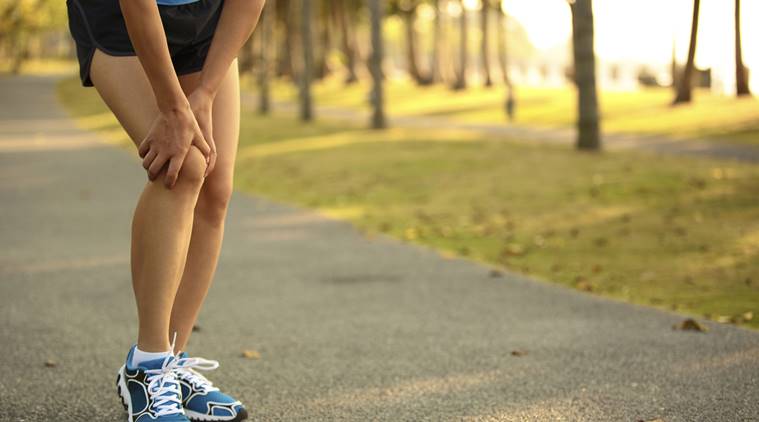 Knee pain accompanies popping sound could be harmful. (Source: ThinkstockPhotos)
Knee pain accompanies popping sound could be harmful. (Source: ThinkstockPhotos)
Living through constant knee joint pain can be challenging. The knee functions to allow movement of the leg and is critical to normal walking. The cartilage or fluids filled between the joint helps in its smooth movement. The complexity of the design and the fact that it is an active weight-bearing joint are factors in making the knee one of the most commonly injured areas. And during injuries, the ligaments, cartilage and menisci get effected.
Chondromalacia and osteoarthritis are two common knee conditions in India, that can cause pain regularly. While the symptoms are almost similar, the age group and reason differ.
What are chondromalacia and osteoarthritis?
Chondromalacia patellae or runner’s knee is a disorder of the cartilage, particularly of the joints and mostly affects the knee. If the person is active on his or her feet for a long time or has always been physically active it can lead to cartilage degeneration.
Meanwhile, osteoarthritis is a degenerative joint disease which causes knee pain in ageing individuals. It occurs when there is damage in and around the joints that the body cannot fully repair, however in runner’s knee the condition can be treated completely in a span of six months or a year. Whereas with osteoarthritis it’s mostly a lifelong problem which can be reduced with proper care but can’t be eliminated completely.
“In most cases of chondromalacia, pain is the common symptom which revolves in and around the knee cap. It usually occurs while taking the stairs, kneeling, squatting or high impact activities. The patient might feel the sensation of cracking while bending or even extending the knee,” explains Dr Jayateerth Kulkarni, Orthopedic, Fortis Hospitals.
The risk factors associated with osteoarthritis are:
* Ageing
* Excessive weight gain
* Heredity
* Gender, as it’s common in Indian women
* Repetitive stress injuries
The risk factors associated with runner’s knee are:
* Flat feet
* Previous injuries
* High activity levels
“It causes muscle imbalance in and around the knee due to degeneration of cartilage and mal-alignment of the knee or the knee cap,” remarks Dr Kulkarni.
Treatment of osteoarthritis
* Weight loss
* Exercise
* Anti-inflammatory drugs
* Support braces and knee cap
* Physical and occupational therapy
* Surgery
Treatment of chondromalacia
* The runner’s knee is always treated with a protocol called “RICE” — Rest- Ice Packs- Crepe Bandage and Elevation along with proper medication and supplements.
* It is recommended to avoid vigorous physical exercises which may cause discomfort to the knee.
* Physiotherapy like ultrasonic massage and hot packs helps to subdue the pain.
* If at all there is no relief from the above measures, on the advice of the doctor, the patient can undergo a surgery called arthroscopic surgery, which removes the loose and frayed cartilage.